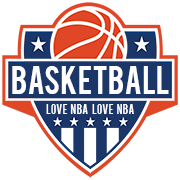2003 NBA New Jersey Nets at Washington Wizards, February 21, 2003, 43 at 40 vs. NBA’s Best Defense
NJN 86, WAS 89 – 43 at 40. In 2003, Michael Jordan scored 43 points against the league’s top defensive team, the Nets, who had a defensive rating of 98.1, ranking ahead of both the Spurs and Pistons. This performance made him the first player in NBA history to score 40 or more points in a game after turning 40 years old.
Kidd, Harris, Kittles, and Jefferson tried to defend Jordan, but he was unstoppable, scoring 43 points on 60% shooting, primarily on jump shots.
FYI, this era was played with zone defenses and hand-checking. While some misinformed fans call it the “peak” of the dead ball era, that’s not entirely accurate. The 1998 and 1999 seasons were actually much slower-paced and more congested since the defensive 3-seconds rule wasn’t introduced until the 2001-02 season. The dead ball era effectively ended with the complete removal of hand-checking by the 2004-05 season, which was done to encourage more perimeter shooting.
However, typical fans often create narratives to justify poor midrange shooting, even after the removal of hand-checking and the introduction of defensive 3-seconds to unclog the paint and create more space. The evidence is the 7-seconds-or-less Phoenix Suns, we can stop pretending they don’t exist. Officiating has become more lenient with each successive era; that’s simply an undeniable fact.
Player of the game:
Michael Jordan: 43 PTS, 18-30 FGM, 60 FG%, 7-8 FTM, 10 REB, 3 AST, 4 STL, 1 BLK, 1 TOV, GMSC 36.8
Not everyone appreciates the second time he came out of retirement and played two seasons for the Washington Wizards. People act like that chapter of Jordan’s career didn’t it even happen.
When rumors of MJ’s return came out in 2001, many were convinced he was washed up and that he would be just ruining his legacy by coming back. But, as he said, there was an “itch” that needed scratching. MJ wanted to return to the game he loved and wanted to test himself against the next crop of elite NBA talent.
In his first press conference as a member of the Wizards, he said:
“You say the young dogs are going to chase me around. Well, I’m not going to bark too far away from them either. I’m not running from nobody. If anything, it’ll be a great challenge for me. I’m not saying I can take Kobe Bryant, or I can take Tracy McGrady. You guys are the ones saying they can take me. That’s all good and fine. I’m pretty sure they’re sitting back welcoming the challenge. Guess what? I’m sitting back welcoming the challenge, too.”
Michael Jordan was a step slower, yes. But he was still Michael Jordan. And he still balled out. Michael Jordan wasn’t as dominant as when he was still running the show in Chicago, but he did put up All-Star numbers in his two-season stint in Washington.
2001-02 season: 22.9 points (42% FG), 5.7 rebounds, 5.2 assists, 1.4 steals
2002-03 season: 20.0 points (45% FG), 6.1 rebounds, 3.8 assists, 1.5 steals
To put things in perspective, in the 2001-02 season, Kobe Bryant was the only other player in the league dropping 25-5-5. But you need to consider the fact that MJ was doing this when he was 39.
Michael Jordan was far ahead of his time, even compared to the era that followed him. While Dirk Nowitzki and Kobe Bryant were shooting midrange shots in volume, Kobe’s best performance was making 414 midrange shots at 43% during the 2005-06 season, with no hand checking. In contrast, at age 40, with one working leg and facing zone defenses while playing against small forwards outside his natural position, Jordan made 486 midrange shots at the same 43% in the 2002-03 season.
Jordan’s impact extended beyond his era, making comparisons to perimeter guards from his time was simply unfair.
Sidenote:
Jason Kidd is the anomaly that challenges all the mainstream narratives about evolved athletes. His career spanned multiple dynasties, eras, and rule changes: from the Jordan-led Bulls’ three-peat to the Shaq and Kobe Lakers’ three-peat, the Spurs dynasty, the Motown Pistons, the Celtics’ Big Three, and the Miami Super Team, as well as up-and-rising Warrior’s Splash Brothers.
A 40-year-old Michael Jordan dismantled a prime 28-year-old Jason Kidd, who was an All-Defensive Team selection and MVP candidate fresh off the Nets’ NBA Finals appearance. This was against the 2003 Nets, who boasted the league’s best defensive rating of 98.1.
Jordan dropped 45 points in their first meeting after joining the Wizards and then scored 43 against Kidd in 2003, despite the NBA’s zone defenses and the so-called “peak” of the dead ball era, defying the narrative that Jordan couldn’t dominate against zone defenses.
Fast forward to 2011, where an older and slower 37-year-old Jason Kidd and 5’10″ J.J. Barea managed to lock down a prime 26-year-old LeBron James, holding him to just 8 points on 3-11 shooting. This was in an era without hand-checking, with a Mavericks team that had an average age of 33.



1 Comment
Y dis game winner never in Jordan highlights